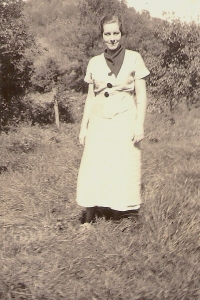Beginnings

Mom
Autumn, 1942. Mother is in the hospital for a hysterectomy after years of (what were then called) “female problems.” She awakens after her planned surgery, tactilely examines her abdomen but finds no bandages, no stitches — nothing binding her back together. At the last moment, there had been no surgery, no hysterectomy. She inquires, and they tell her: “You’re pregnant.”
With me.
Odds & Ends
In the popular lexicon of cancer, a doctor declares: “You have cancer.” It is, however, a threadbare cliché, as though every doctor follows this same script, says these same words, and that every cancerian’s life is immediately upended.
I’ve come to understand that, in reality, I was diagnosed twice with prostate cancer — and the first time was the easy one.
It came on March 26, 2007, when the urologist reported the findings from my biopsy: “There’s a little bit of cancer,” he said over the phone. And given everything we could know from that biopsy, surgery would bear an almost-90 percent chance of a cure (no recurrence). It all sounded rather cheery — optimistic odds worthy of my hope. I would have surgery and move forward, and my cancer would be nothing more than a receding episode in the rear-view mirror of my life.
Except for the ‘second’ diagnosis.
Sep 19, 2007. My first follow-up after surgery: the pulling of the catheter, the test for bladder control, a consult with the surgeon and the delivery of the findings from pathology.
“I never expected this,” my surgeon said, with a shake of his head, as he delivered pathology’s findings: cancer in two of my lymph nodes. Not a trace of cancer anywhere else, just in my prostate gland and in two neighboring lymph nodes. I was now Stage 4, advanced prostate cancer, given the lymph node involvement.
What were the odds, I asked, that the tissue samples analyzed by pathology contained all of the cancer that had metastasized from my prostate? “Less than 10 per cent that we got it all,” he said, “a 90 per cent chance there’s still some cancer somewhere.”
Funny how you can go in with a 90 percent chance of a cure and come out with a 90 per cent chance of none.
In a reassuring voice, though, he told me that one of his patients — just like me – was still alive after eight years. I was only 64 at the time, and that hardly seemed like a stretch goal.
Eight years?
“Seven years,” my oncologist said a month later. Seven and a half years, to be exact, was the median survival time in a 1990s study of men with lymph node involvement who, after surgery, underwent hormone therapy, as I was about to. (Qualifiers: It was quite a small study, and there are far more and far better treatments available today.)
But still… The clock seemed to be ticking backwards on me.
Seven and a half years?
That was seven and a half years ago this week.
Neither eight nor seven nor any other number of years has ever been a prognosis for me. They were neither forecasts nor predictions, just numbers, and certainly nothing that’s ever prompted me to get my affairs in order. I’ve never chosen to indulge these time spans – or even discuss them — because I’ve never really found them actionable: There’s nothing I’d do differently. You just do everything you can and take it a day at a time. And live your life.
And my life today – at least the cancer part of it – inches along. At my six-month check-up in January, my PSA – a marker of how well I’m doing – was minuscule (0.06 ng/mL) and rising slowly (up 0.02 since July 2014’s reading). Heck, the first time I had recurrence of cancer, my PSA was rising 0.03 every three months!
No, I’ve not beaten any odds in this, the eighth year of my being a Stage 4 cancerian. But I do remind myself that whatever my actual number of years might prove to be, my life’s all been “free” — every moment of it lived on free, not even borrowed, time since that day in the fall of 1942.

 May 10, 2015
May 10, 2015 
The Commentariat